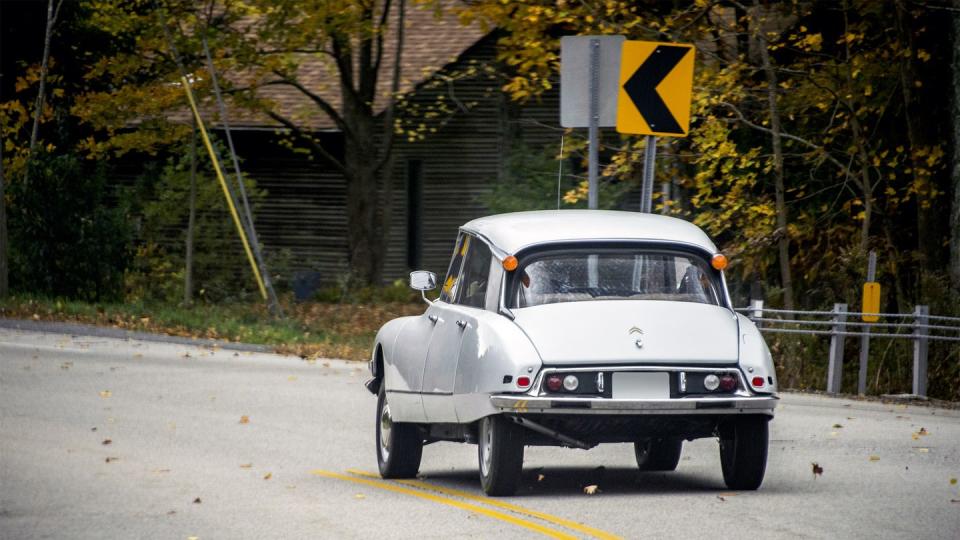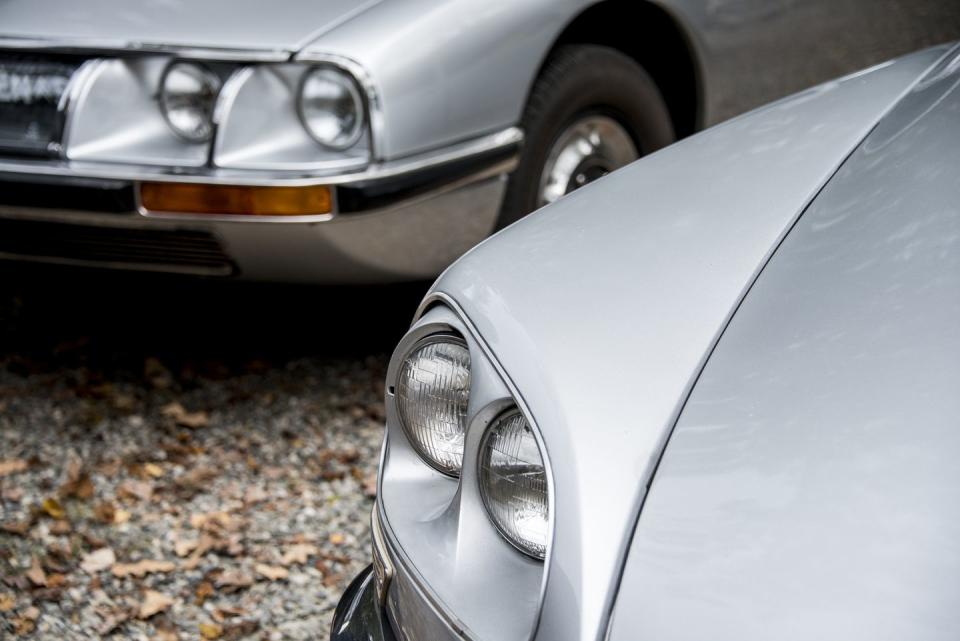Street-Spotted: Citroën DS

The last time you could buy a new Citroën sedan in the US was around 1991—practically yesterday when it comes to classic cars. Of course, XM purchases back then came with a few asterisks: You could import one through a registered importer and have it converted to some semblance of US spec, and have it in your driveway for about the price of a 1992 S-Class.
Still, at least such a thing was possible a little over 30 years ago, even though in practice just a couple dozen XMs made it stateside.
Today, its distant predecessor—the car that inspired much of Citroën's lineup in the second half of the 20th century—is a little easier to spot on the street. That's because the Citroën DS was officially sold in the US for a time, often through import dealerships that stocked a variety of now-obscure brands.
And out of those cars, several hundred still remain in use on these shores, including the one in these photos.
The DS itself arrived on the scene in 1955—or rather landed in Paris from outer space. Ahead of its time in a lot of ways, the streamlined design was simultaneously well balanced and oddly unbalanced, with an impossibly long front overhang and... not much of a trunk out back, a feature Citroën would keep in its successors.
Among its numerous contradictions, it was simultaneously a big car and a small car. Charles de Gaulle used it as a state car, among a number of other heads of state, so it couldn't really be all that small, right? De Gaulle was a tall guy, after all. On the other hand, today the DS appears dwarfed by the likes of the Honda Accord. Weird how that works.
But the main event, from a technological point of view, was certainly the hydropneumatic suspension powered by several small, green grenades. And it wasn't just the suspension, as the green spheres powered the steering, the brakes, and a couple of other systems.

The suspension in the DS still feels magical today, especially for a piece of mid-1950s technology. Rolls-Royce, smartly for the time, licensed Citroën's suspension for its line of Shadow and post-Shadow cars, in the process playing a bit of a cruel joke on the Silver Spirit's later owners. But we can't feel too sorry for those owners for having to seek out mechanics versed in such systems—such are the realities of Rolls-Royce ownership.
Citroën mechanics, on the other hand, stayed employed well past the DS' exit from production in 1975. That's because the SM coupe and the CX sedan, sold in the US officially and unofficially, also featured a version of its hydropneumatic system, with the CX staying in production all the way until 1991.
The DS itself stayed in production for a long two decades, during which time it received a few tweaks as well as a station wagon variant, which were also offered in the US.
Citroën maintained its own dealership network in the US through 1973, and then for another 15-odd years Citroën cars were sold unofficially though gray market importers and converters like CXA.
But after a small batch of XMs were brought into the US in the early 1990s, it was largely lights out for the Citroën brand stateside.
Seeing one of the originals on the road, especially going through a curve, is still a bit of a startling sight. As we followed this DS down the road, it met up with a friend in the form of a US-market Citroën SM—itself a rare mixture of design and engineering.

 Yahoo Autos
Yahoo Autos 